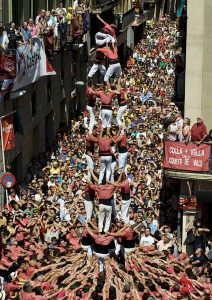In January 2018, the Catalan Tourist Board will present the Year of Culture for 2018.
Throughout the year, visitors will be able to explore the region’s cultural attractions, landscapes and gastronomy scene.
With nine UNESCO World Heritage sites, the destination is known for its cultural festivals, history and traditions.
The city of Tarragona will feature in UNESCO’s new Ancient Europe tourist route. In addition, eight other European cities will be included that demonstrate the cultural heritage of the continent and will be linked to the year of European Cultural Heritage in 2018.

A wander around Barcelona reveals its famous gothic façades alongside Antoni Gaudí’s most famous creations; Parc Güell, La Pedrera, Casa Batlló and Casa Vicens – Gaudi’s first major construction that will open to the public as a museum for the first time on 16 November 2017.
Casa Vicens was the artist’s first residential construction, built as a summer home between 1883 and 1885 and was the starting point of Gaudí’s career. As a further celebration of the opening, the Gaudí World Congress will be found at the University of Barcelona for three days in October 2018.
The conference gathers international experts, young innovators and entrepreneurs and to share knowledge and get inspired from Gaudí’s life and work.
The Romanesque Centre of Vall de Boí has recently announced the ‘Romanesque art and architecture and Falles’ route. This new route combines fire feasts called Falles of the Pyrenees, and the Romanesque-style churches of Vall de Boí: two unique Catalan traditions within this UNESCO World Heritage Site.
The Alta Ribagorça District Council has also signposted the “Paths of Fire” routes for self-guided tours. These 10 routes start at the beacon where the Falles are lit and continue down into the mountainside.
The city of Valls has established a new ‘Castellers’ museum dedicated to the Catalan human towers.

The longstanding Catalan tradition of building human towers, or castells, originated near the city of Tarragona. Traditionally, the castellers take place as part of traditional festivals, as well as in performances throughout the castellers season (June – November).
In 2018, the biannual International Castellers contest comes back to Catalonia, offering visitors a show where the different ‘colles’ compete to build the highest and most complex human tower.
Catalan culture relies heavily on its fresh produce and market culture. The markets are not only for distributing food, but are also a place for communities to meet.

